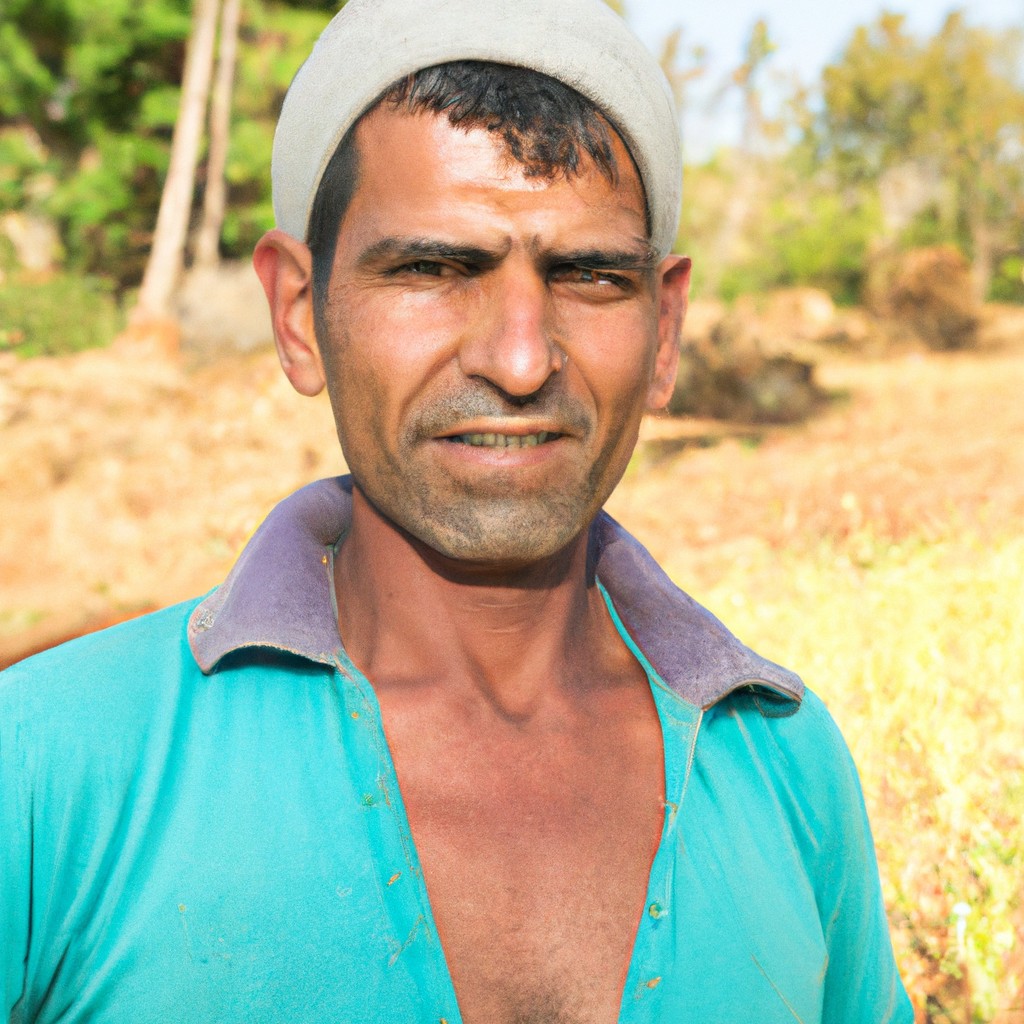Exploring the sustainable potential of no-till farming, this article delves into its environmental impacts and role in regenerative agriculture.
No-till farming is indeed a sustainable agricultural practice that can significantly contribute to soil health, biodiversity, and carbon sequestration.
This method, which involves leaving the previous year’s crop residue on fields before and after planting the next, reduces soil erosion and fosters an ideal environment for earthworms and other beneficial soil organisms.
Moreover, it can increase water infiltration and retention, thereby making crops more resilient to drought.
While it’s not a silver bullet for all agricultural challenges, when properly managed, no-till farming can be a key component of a sustainable and regenerative agricultural system.
This article will delve deeper into the benefits and challenges of no-till farming, providing a comprehensive understanding of its role in sustainable agriculture.
Key takeaways:
- No-till farming is sustainable and contributes to soil health and biodiversity.
- It reduces soil erosion and increases water infiltration and retention.
- No-till farming is a key component of sustainable and regenerative agriculture.
- It is more sustainable than conventional farming methods in terms of soil fertility and resilience.
- No-till farming is globally increasing, promoting more sustainable agricultural practices.
Look Inside:
Understanding No-Till Farming

From eliminating the traditional plowing process to directly planting seeds into undisturbed soil, this innovative farming technique aims to minimize soil disruption. Retaining the crop residues from the previous year on the field enriches the soil composition forming a protective cover.
This organic cover conserves moisture, enhances organic matter content, and promotes the proliferation of beneficial soil organisms. These enriched conditions often result in improved crop yield.
Furthermore, no-till farming decreases fuel, labor and equipment needs, rendering it a cost-effective practice. The farming strategy also mitigates soil erosion and carbon emission substantiating the fact that the method finds its roots in soil conservation.
Comparison of No-Till and Conventional Farming Methods
In conventional farming, farmers plow their fields to prepare the soil for sowing seeds. This method theoretically allows for easier planting, better mixing of organic matter, and control over weed. However, it also disrupts soil structure, leading to soil erosion and nutrient depletion.
Conversely, no-till farming preserves the soil structure by eliminating plowing. As a result, it enhances soil health by improving its organic content, water retention, and nutrient cycling. Together, these changes make the no-till system more sustainable than its conventional counterparts, particularly regarding long-term soil fertility and resilience to extreme weather events.
However, no-till has its own drawbacks, including the need for selective herbicides to manage weeds and an increased risk of certain soil-borne diseases. Understanding these differences is crucial for determining the most effective and sustainable farming system.
Sustainability of No-Till Method in Agriculture
No-till practices play a central role in supporting soil conservation. By reducing the disruption of soil composition, these techniques protect the soil’s organic matter and promote its biological activity. This can drastically lower degradation rates and enhance the soil’s capacity for nutrient cycling and carbon storage.
While minimizing soil erosion, the no-till approach can increase water absorption, a crucial component in areas suffering from water scarcity. As these practices can dramatically lower the volume of irrigation water needed, they aid in conserving crucial water resources.
Further, farms embracing no-till practices often experience a reduction in fuel, machinery, and labor costs due to the decrease in tillage operations. This economic benefit allows the practice to be sustainable not just environmentally, but also economically for farmers.
Additionally, by limiting machinery use, no-till farming contributes to reduced greenhouse gas emissions, assisting in mitigating climate change. Nevertheless, while offering numerous benefits, it is essential to also focus on the associated challenges. Proper management techniques, including efficient crop rotation and pest control strategies, are crucial to maximizing the no-till method’s sustainability and effectiveness.
Global Usage and Application of No-Till Farming
Across the globe, there’s an increasing adoption of this farming approach that leads to beneficial environmental outcomes. In the Americas, particularly the United States, Canada, and Brazil, farmers largely utilize no-till practices in corn and soybean production.
Europe has been slower to embrace this technique due to weather and soil conditions, yet interest is growing in countries including France and Germany. Australia and some parts of Africa are also escalating their usage, particularly in response to draught conditions and the improved water retention qualities of this method.
In Asia, particularly India and China, adaptation is gradual, yet steadily increasing, especially as the impact of climate change intensifies. These countries are mainly using the technique for rice and wheat crops. Despite the gradual uptake, proactive policy support and education are essential to further promote and upscale no-till farming worldwide.
It’s important to note that successful implementation requires understanding of regional weather, soil conditions, and crop varieties. Proper training for farmers is also crucial to manage potential challenges such as disease and pest management.
Therefore, while the adoption of no-till farming is far from universal, its global usage signals a positive trend towards more sustainable and regenerative agricultural practices.
Benefits and Drawbacks of No-Till Farming
The primary drawing point of no-till is its role in mitigating soil erosion and improving soil quality. By leaving crop residues undisturbed on the field, the system safeguards the soil from wind and water erosion. This practice also boosts the organic matter content in the soil, elevating its fertility and ability to support plant growth.
In terms of disadvantages, no-till farming often necessitates the use of more herbicides to control weeds, as the lack of tilling diminishes the mechanical disruption of weed growth. Another challenge involves the adjustment in farming equipment; traditional tillage implements will need to be replaced or altered significantly for effective no-till farming, and this change might induce an extra financial burden.
Overall, while the benefits appear to significantly outweigh the drawbacks, it’s vital for farmers transitioning to no-till to fully understand and prepare for these challenges to maximize the potential of this farming method.
Regenerative Agriculture and Its Relationship With No-Till Farming
No-till farming is often recognized as a crucial part of regenerative agriculture—a holistic land management approach intended to increase biodiversity, enrich soils, retain water, and improve ecosystems’ resilience.
By refraining from tilling, the soil’s integral structure remains undisturbed and organic matter increases, enhancing overall soil health over time.
An increase in organic matter not only benefits crop growth but also intensifies the soil’s ability to capture and store carbon—an essential factor in tackling global climate change.
In essence, no-till farming forms the backbone of the soil-rebuilding process, playing an instrumental role in promoting efficient nutrient cycling, improved water retention, and greater resilience.
Impact of No-Till Farming On Conservation Agriculture
Conservation agriculture aims at achieving sustainable and profitable agriculture, subsequently improving the livelihoods of farmers through the application of three major principles: minimal soil disturbance, permanent soil cover, and crop rotations. It’s in these areas that the impacts of no-till farming become evident and significant.
Minimal soil disturbance is at the beating heart of no-till farming, helping to maintain the natural biodiversity in the soil and reducing the risk of erosion. It conserves soil structure and organic matter levels, strengthening the resilience of agriculture to climate change.
Achieving permanent soil cover can be done effectively through no-till farming by leaving crop residues on the field. Hence the soil temperature is regulated, moisture evaporation reduced, and weed growth suppressed.
Considered in crop rotations, no-till farming has the potential to improve the balance of nutrients in the soil, notably augmenting the level of nitrogen – much needed by most crop species.
Hence, with diverse and well-integrated methods, no-till farming bolsters each of these conservation agriculture principles, emerging as a key player in sustainable farming practices.
FAQ
Why is no-till farming sustainable?
No-till farming is sustainable as it enriches the soil with organic matter, increases its water-holding capacity, protects crops during periods of drought and flooding, and prevents wind and water erosion, thereby benefiting water and air quality.
Is no-till farming good for the soil?
Yes, no-till farming is beneficial for the soil as it enhances soil health and reduces expenditure on fuel and labor.
Is no-till farming profitable?
Yes, no-till farming is profitable as it saves growers an average of $31.95 per acre due to reduced tilling costs, despite a spending of $15.00 per acre on cover crop seed.
How does no-till farming contribute to carbon sequestration?
No-till farming boosts carbon sequestration by allowing carbon to be stored in the soil rather than released into the atmosphere through tillage.
What are the long-term effects of no-till farming on biodiversity?
No-till farming promotes long-term biodiversity by improving soil health, reducing erosion, and creating a hospitable environment for a range of flora and fauna.
How does no-till farming impact water quality and availability?
No-till farming positively impacts water quality and availability by reducing runoff and soil erosion, and increasing infiltration and retention of water in the soil.




